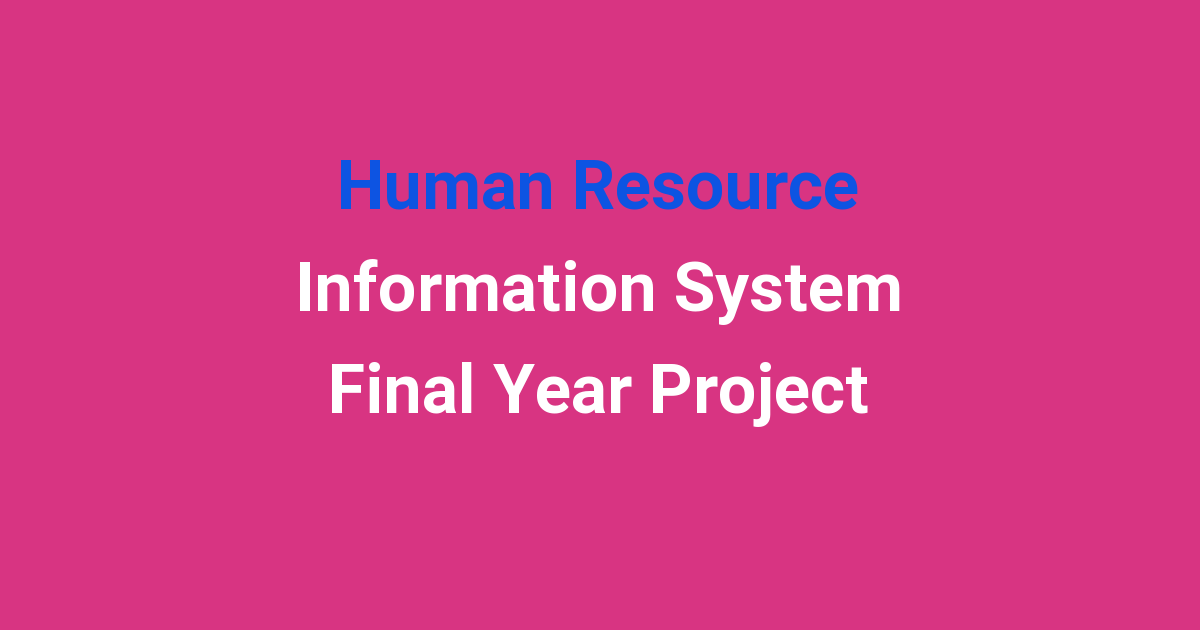Final year project on a human resource information system.
Human Resource Information System Final Year Project
Introduction
In today’s fast-paced world, organizations are constantly looking for ways to streamline their operations and improve efficiency. One area that can greatly benefit from technological advancements is human resource management. Human Resource Information Systems (HRIS) have become essential tools for modern businesses to effectively manage their workforce. This project aims to develop a comprehensive HRIS that meets the specific needs of an organization.
Problem Statement
The current manual HR management system in many organizations is inefficient and prone to errors. Keeping track of employee data, payroll, performance evaluations, and other HR functions manually can be time-consuming and labor-intensive. This leads to delays in decision-making, inaccuracies in data, and ultimately affects the overall productivity of the organization. There is a critical need for a more efficient and accurate system to handle all HR-related tasks.
Existing System
The existing HR management system involves manual data entry, filing of documents, and reliance on spreadsheets for record keeping. This system is not only time-consuming but also leaves room for errors and inconsistencies in data. Moreover, the lack of integration between different HR functions makes it difficult to obtain a comprehensive view of the organization’s workforce.
Disadvantages
Some of the disadvantages of the existing HR management system include:
1. Time-consuming manual processes
2. Inaccurate data entry
3. Lack of integration between different HR functions
4. Difficulty in accessing and analyzing employee data
5. Limited scalability and flexibility
Proposed System
The proposed HRIS will address these limitations by providing a centralized platform for all HR-related tasks. The system will automate processes such as payroll management, employee onboarding, performance evaluations, and training programs. It will also offer advanced features such as data analytics, employee self-service portals, and mobile access to facilitate seamless communication and collaboration within the organization.
Advantages
Some of the key advantages of the proposed HRIS include:
1. Automation of manual processes
2. Improved accuracy and consistency in data
3. Integration of all HR functions on a single platform
4. Real-time access to employee data and analytics
5. Enhanced communication and collaboration among employees
6. Scalability to accommodate the organization’s growing workforce
Features
The HRIS will include the following features:
1. Employee Database Management: Centralized repository for all employee data including personal information, performance evaluations, and training records.
2. Payroll Management: Automated payroll processing based on attendance records and tax regulations.
3. Performance Evaluation System: Tools for setting performance goals, conducting evaluations, and providing feedback to employees.
4. Training and Development: Online training modules, skill assessments, and career development plans for employees.
5. Data Analytics: Dashboards and reports for analyzing employee performance, engagement, and retention rates.
6. Employee Self-Service Portal: Platform for employees to access their personal information, submit leave requests, and communicate with HR.
7. Mobile Access: Mobile app for employees to access HRIS features on the go.
Conclusion
In conclusion, the development of a comprehensive HRIS is essential for modern organizations to effectively manage their workforce. By replacing the existing manual HR management system with an automated and integrated solution, organizations can improve efficiency, accuracy, and productivity. The proposed HRIS will provide a centralized platform for all HR functions, offer advanced features for data analytics and employee self-service, and facilitate seamless communication and collaboration within the organization. This project aims to address the shortcomings of the existing system and propose a new and innovative solution for human resource management.

